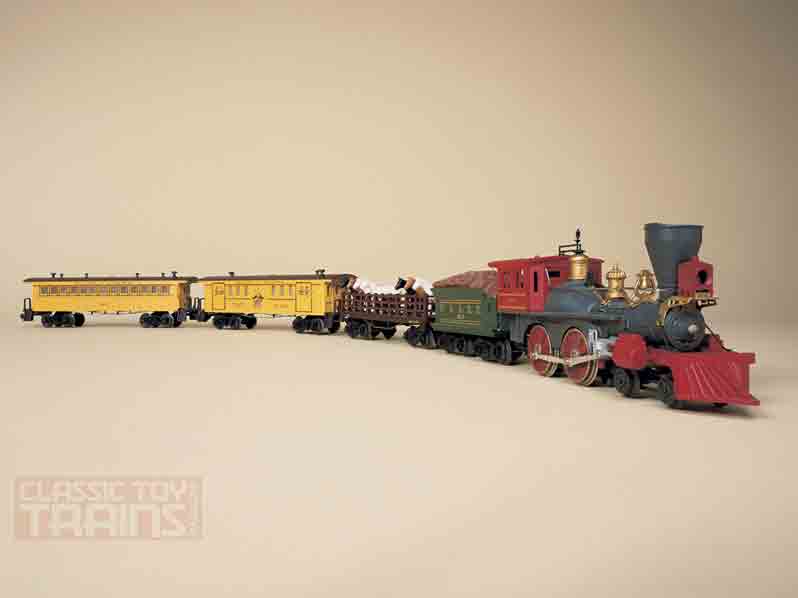
Lionel’s General set, based upon a woodburning 4-4-0 locomotive that actually saw wartime service on the Western & Atlantic railroad, is loved for authentically representing the 19th century prototypes and for its colorful paint scheme. 800 x 600 wallpaper1024 x 768 wallpaper1600 x 1200 wallpaper […]
Read More…
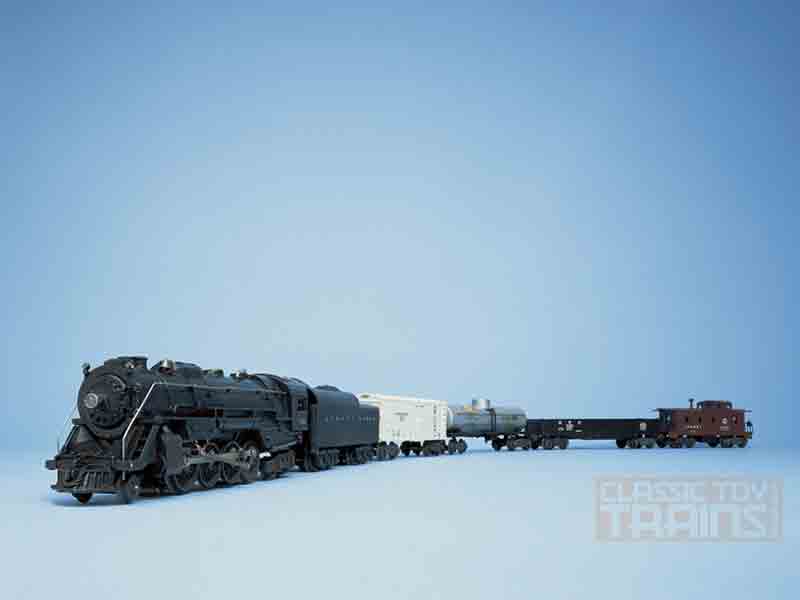
Lionel’s 1950 2-8-4 Berkshire steam locomotive was the workhorse of the post-World War II Lionel O gauge line. 800 x 600 wallpaper1024 x 768 wallpaper1600 x 1200 wallpaper […]
Read More…
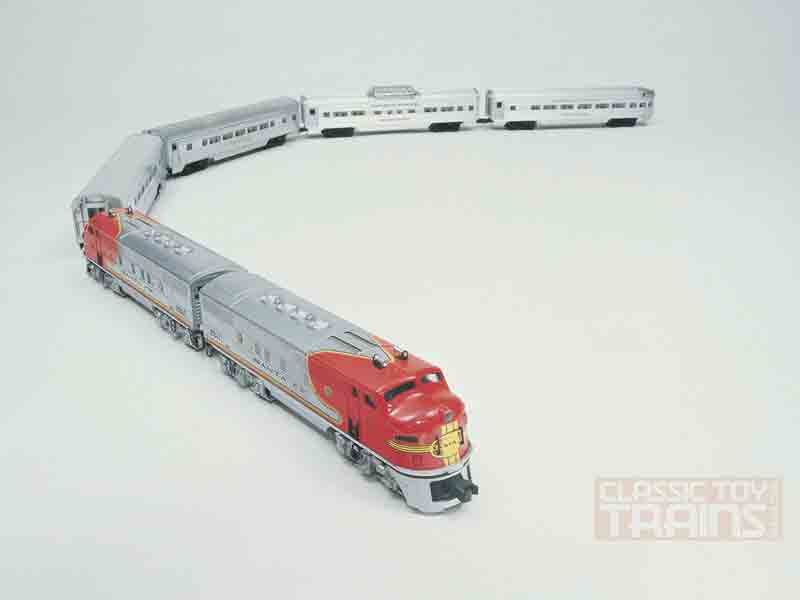
Lionel’s Super Speedliner, the first streamlined outfit, included everything that made the Lionel trains of the 1950s great – a wide array of add-on details, Magne-Traction, a horn, and more. Plus it wore the Santa Fe’s unforgettable red-and-silver paint scheme. 800 x 600 wallpaper1024 x 768 wallpaper1600 x 1200 wallpaper […]
Read More…
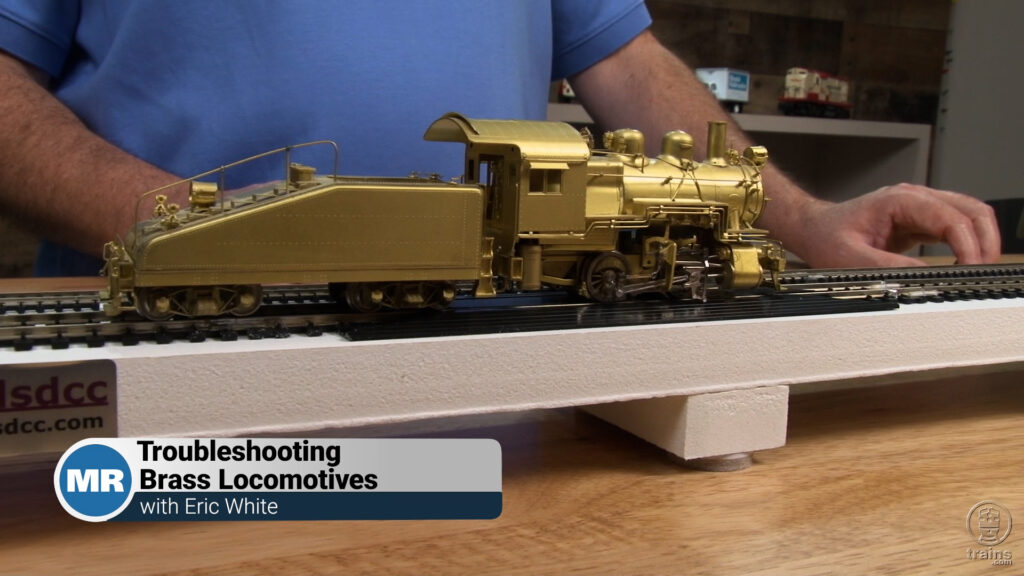
Senior Editor Eric White evaulates and troubleshoots an HO scale brass steam locomotive from Sunset Models to figure out why the gearbox isn’t turning. […]
Read More…
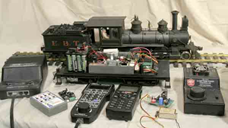
Download “Making them go,” Kevin Strong’s 2003 article describing how large-scale locomotives are powered. Look for an updated version of this article in the April 2010 issue. […]
Read More…

Here’s a classic tale of a kid who badly wanted to play with his trains, but couldn’t – at least not right away. Find out exactly what we’re talking about! Jack Fox had to wait for his O gauge layout […]
Read More…
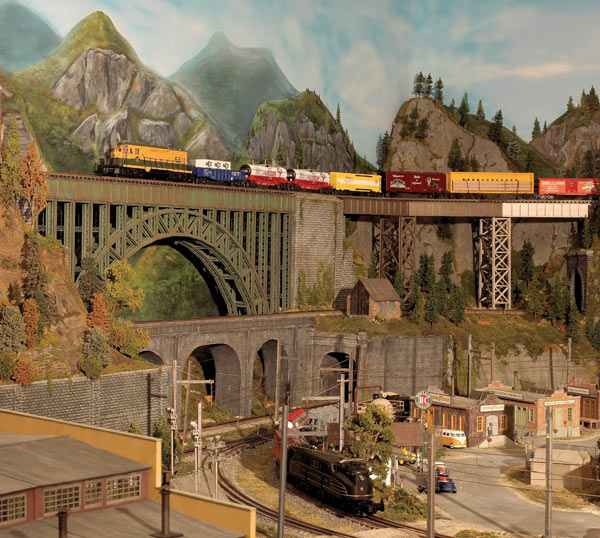
One of the most notable changes in the toy train hobby over the past 10 to 15 years has been the emergence of businesses that design and build layouts. Companies under the direction of an imaginative leader oversee construction of O and S gauge railroads for individuals as well as museums and other public institutions. […]
Read More…
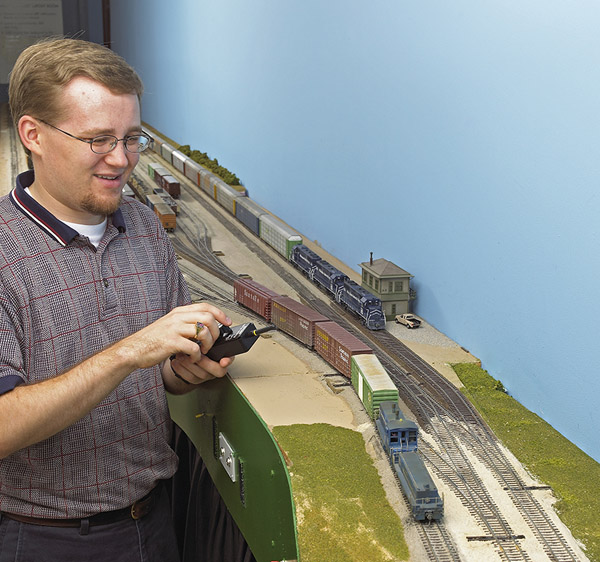
Dispatcher control (cab control)To operate more than one train using direct current (DC) train control, a model railroad can be divided into a series of isolated electrical blocks. A dispatcher then assigns one or more blocks to an operator’s cab, allowing him to run his train in these areas. Memory throttleA memory throttle allows an […]
Read More…

Code of railPrototype railroads use rail of varying heights and weights depending on the type and frequency of trains that run on it. On model railroads, code is the height of the rail measured in hundredths of an inch. See fig. 2. FlextrackWhile some modelers handlay their tracks by spiking the rail to individual wood […]
Read More…
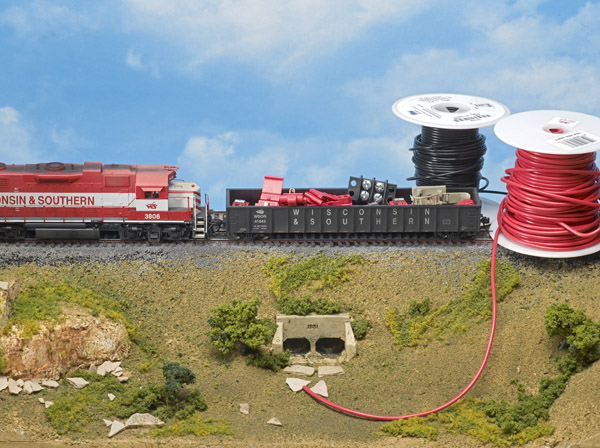
Running trains with Digital Com-mand Control (DCC) is a lot of fun, and it can make operating a model railroad an enjoyable experience. However, all those DCC electronic components and sound decoders don’t mean much if you can’t get a reliable signal to the tracks. When it comes down to it, nickel-silver rail is a […]
Read More…
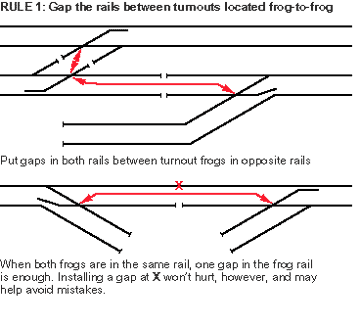
How to wire power-routing turnouts: While it may initially seem difficult, basic two-rail wiring for power-routing turnouts is easy if you understand and apply just two simple rules. The diagrams below demonstrate these crucial wiring principles. Rule 1: Gap the rails between turnouts located frog-to-frog. Place gaps in both rails, between turnout frogs in opposite […]
Read More…

Paul Helgeson has less than 100 square feet dedicated to his layout, but the variety of scenes is astonishing. Here we offer some additional photographs showing more of his spectacular modeling. Click on each photo to see a larger image. […]
Read More…












